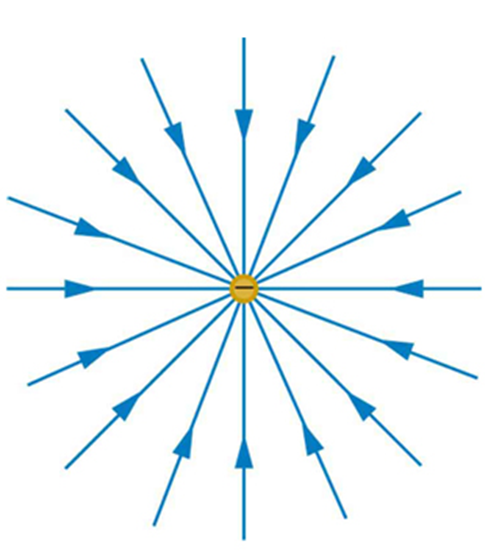Electric Potential | Electric Field as Potential Gradient
The potential energy per unit charge is called the potential of that point. The difference in potential energy per unit charge between two points is called the potential difference.
We can define the potential difference as the work done moving a unit positive charge from one point to another against the field while keeping the charge in electrostatic equilibrium is called the potential difference.
Electric Potential
Consider a positive charge q which is allowed to move in an electric field produced between two oppositely charged parallel plates.

The positive charge will move freely from B to A and gain K.E but when a positive charge is allowed to move from A to B an external force must be applied to the charge against the electric field and it gains P.E.
When the charge moves from A to B it will move with uniform velocity keeping the electrostatic equilibrium.
Suppose E is the electric intensity between plates then equilibrium may be achieved by applying a force F=qoE in opposite direction at every point along its path.

Work is done on the charge and it is stored as the potential energy of the charge.
This work is independent of the path but depends upon initial and final positions. Let WAB be the work done by the force in carrying positive charge qo from A to B keeping the charge in equilibrium.
This work done on the charge qo is equal to the change in potential energy so
ΔU=WAB
UB-UA=WAB
Where UA and UB are the potential energies at points A and B respectively but the potential difference between two points in an electric field is the work done on unit positive charge keeping the charge in equilibrium
WAB/qo= ΔU/qo
=UB/qo – UA/qo
=VB – VA
= ΔV
ΔV=VB-VA=WAB/qo= ΔU/qo
Where VA and VB are the electric potentials of points A and B respectively.
The electric potential energy and the electric potential difference between the point A and B are related as
ΔU=qo ΔV=WAB
Unit of electric potential:
The SI unit of potential energy is joule and that of charge is Coulomb. Thus the unit of potential difference is joule per coulomb which is equal to one volt.
1volt=1Joule/1 Coulomb
The potential difference between two points will be one volt if one joule of work is done to move a positive charge of one coulomb from one point to another point keeping the charge in equilibrium.
The electric potential at a point
Work done in moving a unit positive charge from infinity to that point in the electric field keeping it in equilibrium is called the electric potential of that point.
To calculate the electric potential at any point we must have a reference point where the potential is supposed to be zero.
This point is usually taken at infinity. Let A be the point at infinity where the electric field is zero.
VB-VA=WAB/qo
VB-0=WB/qo
VB=WB/qo
V=W/qo
The potential at a point is still a potential difference between the potential at that point and the potential at infinity. Both potential and potential differences are scalar quantities.
Electric field as potential gradient
It is the relation between electric intensity and potential difference. The potential difference between points A and B is given by
VA-VB=WAB/qo
Work done in moving the charge from A to B is
WAB=F.d=qoE.d=qoEdcosθ
=qoEdcos180=qoEd(-1)
= –qoEd
Force is applied opposite to qoE to keep the charge in equilibrium.
VB-VA=-qoEd/qo=-Ed
E=-(VB-VA)/d
E= ΔV/d
When plates A and B are separated by an infinitesimally small distance Δr then
E= ΔV/ Δr
Where the quantity ΔV/ Δr is the rate of change of the maximum value of potential with distance and is termed as Potential Gradient.
The negative sign shows that the direction of E is along with the decreasing potential. Move from a point of low potential to a point of high potential.
Thus the unit of electric intensity becomes

But the unit of E by relation

Frequently Asked Questions(FAQs)
What are electric potential and potential energy?
Electric potential energy is the energy that is needed to move a charge against an electric field. The further you need to move a charge in the electric field, the more energy you will need. Similarly, if the electric field is stronger, you will need more energy to move the charge through it.
What is the SI unit for electric potential?
The SI-derived unit for electric potential is the volt, in honor of Alessandro Volta. A voltage is a difference in electric potential between two points.
What is negative electric potential?
A voltage lower than the earth’s or other conductor’s voltage is used as an arbitrary zero of potential.







Leave a Reply